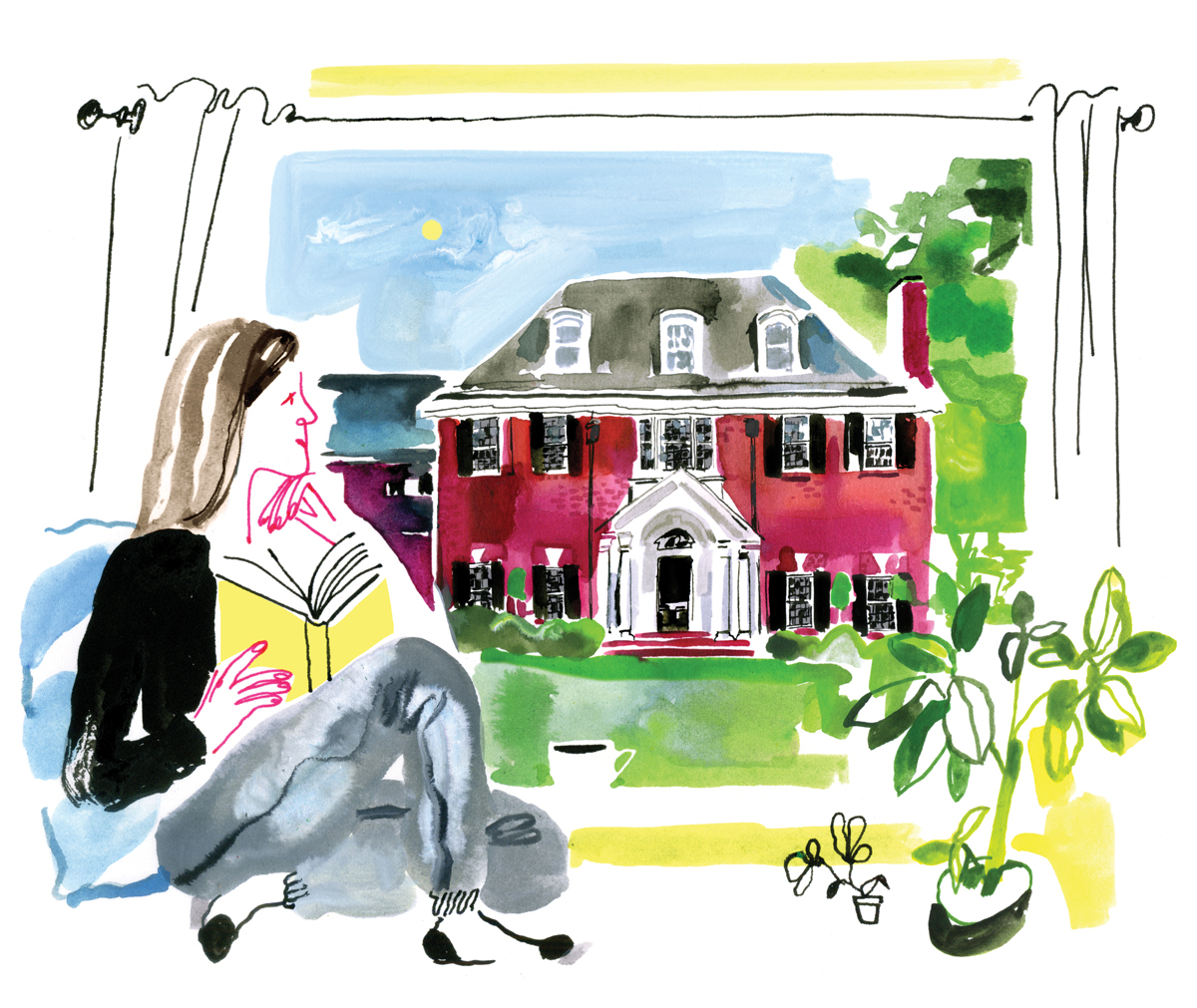
Illustration by Lauren Tamaki
A decade ago my now ex-husband and I purchased a nearly 100-year-old wood-framed house in Inman Park. Built in Colonial Revival style, it was white with black shutters and a red front door. The wide front porch, flanked by Doric columns, evoked visions of sipping sweet tea, or perhaps bourbon. The house had high ceilings, five fireplaces, and wavy glass windows through which the midafternoon sun would cast rectangular sheets of light onto the hardwood floors, where our two cats would sun themselves.
Behind the gracious facade, we were struggling. I had married a man 11 years my senior in San Francisco, presuming that we would return to my hometown of Atlanta and live in a grand house. It was a fantasy I had been raised to believe in, having grown up in a Philip Shutze house with back and front staircases, plus interior doorbells that had once summoned servants.
We had not finished unpacking the moving boxes before my husband began plotting ways for us to return to San Francisco. He missed his friends, he missed the culture, but mostly he missed the freedom of renting an apartment—where if your finances changed, you could always move into cheaper digs. As writers, our finances were always changing, and our income hit a downward spiral just as our first mortgage statement arrived. Then the housing market crashed, and the true folly of what we had done sunk in.
We lived there for five years, our savings quickly drained, our credit cards maxed out. During that time we also came face-to-face with just how mismatched we were as a couple. In San Francisco we had been good at going out to dinner and discussing writing. But over the nitty-gritty details of building a shared life, we agreed on very little. We could not even decide whether or not to have a child, and so we did not, which in hindsight was a blessing.
Our marriage finally ended, appropriately enough, in Reno, Nevada, where my husband had taken a professorship. He had made it clear that he wanted a fresh start not just from our life in Atlanta, but also from me. That year I also received an unexpected royalty check from my second book, so we were finally able to sell the house, at a significant loss.
After the divorce I returned to Atlanta and picked up enough adjunct teaching gigs to keep me afloat. I answered an ad for a carriage house apartment situated behind a stately two-story home in Druid Hills. The space was small, about 450 square feet, but it had hardwood floors and French doors with glass panes separating the bedroom from the living area. The walls were painted a pale yellow, the trim a creamy white. There was a gas stove, a bathtub, and best of all a washer and dryer, a true luxury after months of using the Laundromat. I placed my Persian rug on the floor, hung woodcut prints on the walls, and spread a blue-and-white quilt on the bed. The space was both colorful and peaceful.
Still, each night when I arrived home, I would look at my landlord’s gracious house and think, “I used to live in the big house. How did I wind up here?”
I confessed all of this to a wise friend, who suggested I reframe my narrative. She suggested that instead of lamenting my loss, I should tell myself: “There was nothing I could afford about that big house. My new home is bright, cheerful, safe, and absolutely within my budget.”
I said those words when I parked in front of the carriage house after work. I said those words as I climbed up the rickety steps that led to my front door. I said those words as I opened my door and walked into my very own space, cozy and warm—and affordable.
It did not take me long to realize how very true those words were.

Photograph by Dorothy O'Connor
About the writer
Susan Rebecca White is the author of three novels: A Place at the Table, A Soft Place to Land, and Bound South. Her nonfiction essays have been published in the Bitter Southerner, Salon, Tin House, and by the UNC Press. Additionally, she has written food criticism for Atlanta magazine. Susan has taught fiction writing at Hollins, SCAD, and Emory, and has led workshops on spiritual writing at her church and in small groups. Susan currently lives in a 1,100-square-foot bungalow with her husband, Sam, and their son, Gus.
This article originally appeared in our Spring 2017 issue of Atlanta Magazine’s HOME.













